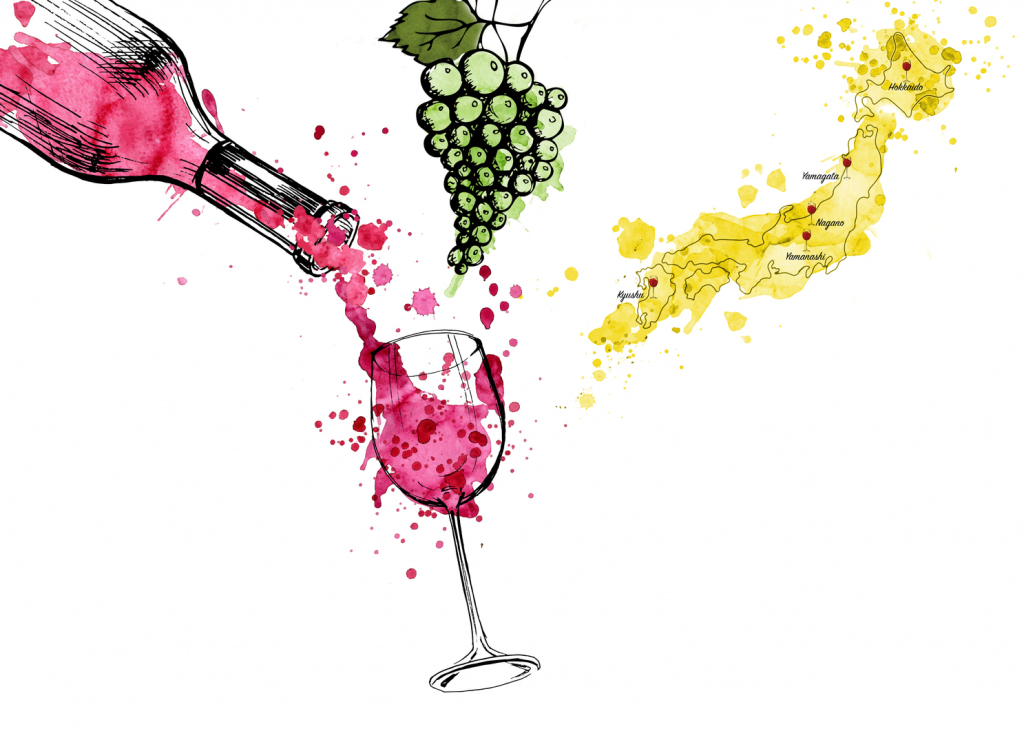While Japanese cuisine, sake and whisky are in vogue at London’s fine dining establishments, Japan’s winemakers continue to be on the outside looking in.
“The majority of what Japan produces is sweet, entry-level wine from the Labrusca varieties which is either drunk at home or exported to Asia – not exactly made with European taste buds in mind,” says Jo Gilbert, features and insights editor at Harpers Wine & Spirit magazine. “Change is now accelerating however.”
Helping to press the pedal to the metal is a law put in effect last year requiring all Japanese wines labeled as such to have been produced from grapes grown in Japan. Up until the law’s passage, due to lax regulations, it was a good bet wine labeled as Japanese was imported from overseas and merely bottled on Japanese soil. With greater trust in the labels, oenophiles are starting to take notice of vintages produced at Japan’s boutique wineries.
The priority is we need to filter which wines are good and which wines are bad.
Kunio Naito, owner of Cave de Relax wine shop in Toranomon, initially neglected to sell Japanese wine in his store. Twenty years later, 10 percent of Naito’s inventory is native wines. Some “super stars” are producing wines on par with European counterparts, he says. Others are not.
“There is potential. The priority is we need to filter which wines are good and which wines are bad,” says Naito. “Otherwise a lot of bad Japanese wines will go overseas.”
With more than 300 wineries operating from Hokkaido to Kyushu (everywhere except Shikoku), we take a look at some of the winemakers giving Japan a good name.
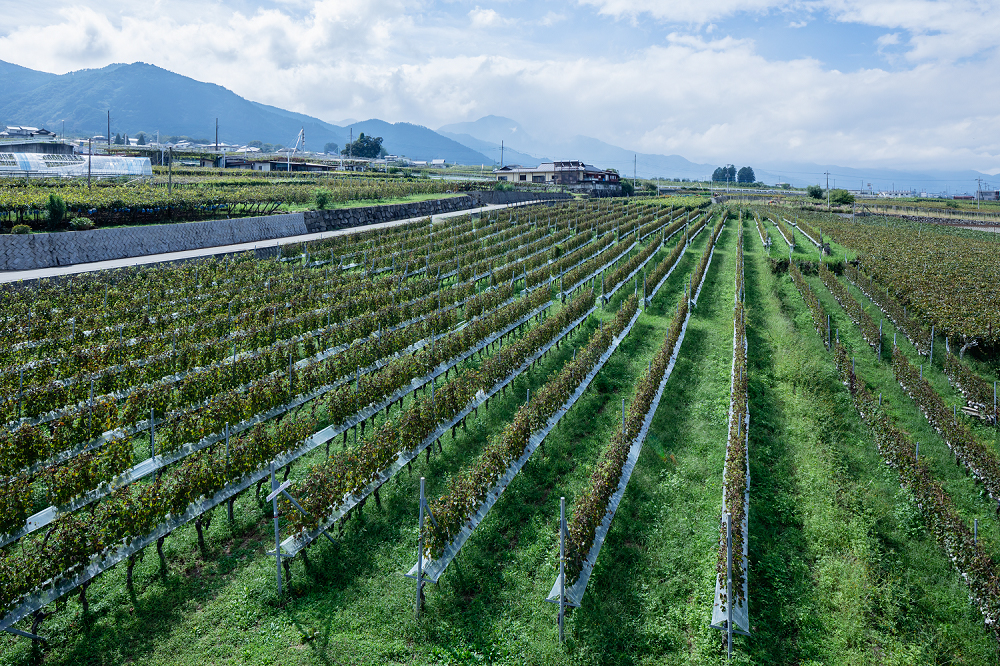
Chateau Lumiére
Yamanashi Prefecture: Home of Japanese Wine
The shadow of Mount Fuji protects Yamanashi’s Kofu Valley from rain and typhoons. While this hampers the area’s rice production, it keeps the vineyards in Japan’s birthplace of wine free of mold. As such, edible Koshu grapes have been grown in the Kofu Valley for hundreds of years.
Following the Meiji Restoration, the Westernization of Japan was intense, with experts traveling to Europe to learn beer brewing, whisky distilling and wine production. Japan’s first commercial winery was established at Katsunuma in 1875, producing light, citrusy wines from Japan’s native varietals, Koshu and Muscat Bailey A, which pair well with the umami of Japanese cuisine. In the past few decades Yamanashi wineries have branched out into such hardy European varietals as Chardonnay and Cabernet Sauvignon.
One of the oldest family-operated wineries in Japan, Lumiére Winery, practices natural farming techniques to produce a wide variety of high-quality grapes. The winery, which has a branch of its wine shop – In Vino Veritas – near Tokyo’s Nagatacho Station, began exporting to the UK in 2011, drawing positive reviews.
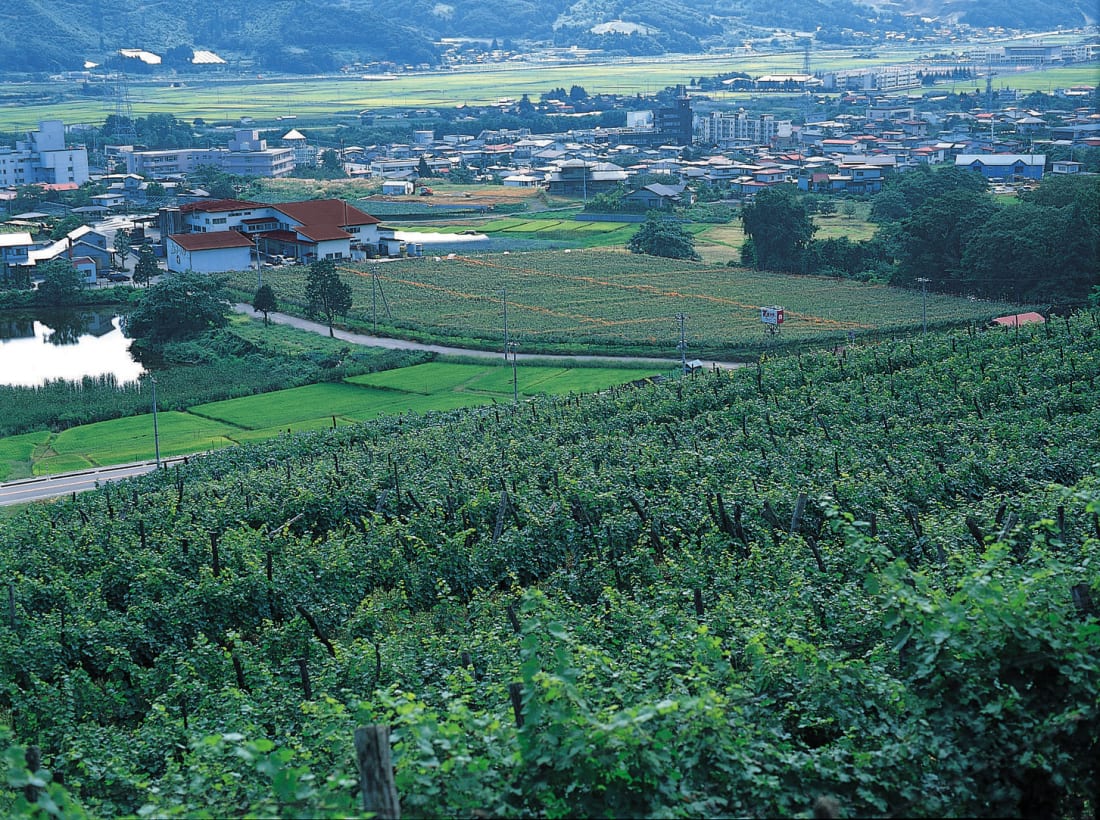
Takeda Winery
Yamagata Prefecture: Making Wine for Generations
When the Meiji government imported winemaking to Japan in the late 1800s the decision was made to plant American breeds of edible Concord and Delaware grapes in the northern prefectures of Aomori and Yamagata. The sweet wine cocktail produced from these weather and bacteria-resistant grapes became a staple in Japanese homes.
Founded in 1920 at the foot of Mount Zao north of the onsen town of Kaminoyama, Takeda Winery added the hybrids Muscat Bailey A and Black Queen to its repertoire as early as 1927. Taking over in 2002, fifth-generation winemaker Noriko Kishidaira cultivates her vines by hand and limits use of chemicals.
While still producing a variety of Delaware styles, Kishidaira produces several wines from the European noble grapes, with her sparkling Chardonnay and Chateau Takeda Red, a blend of Cabernet Sauvignon and Merlot, drawing particular praise.
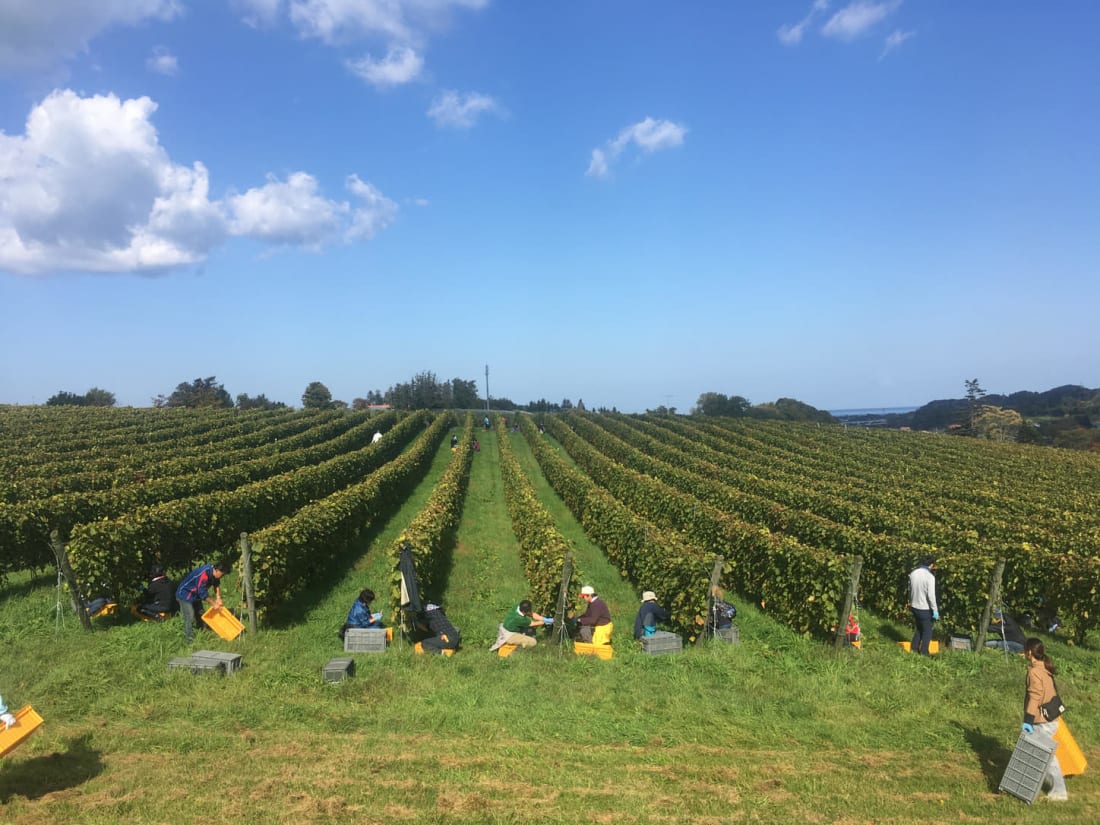
Domaine Takahiko
Hokkaido: Japan’s Napa Valley
As a whole, Japan’s interest in wine lay dormant until the 1964 Olympics, after which the Japan Sommelier Association was founded with Japan’s first sommelier, Katsumi Asada, serving as chair. The wine boom reached as far north as Hokkaido. Though Hokkaido’s first grapevines were planted in 1875, winemaking in Japan’s agricultural breadbasket took off in the late 1960s, with Hokkaido Wine boasting the title as Japan’s largest winery.
Of the 30 wineries in Hokkaido, 11 are located in the coastal city of Yoichi, which is known more as the hometown of Nikka whisky. The availability and diversity of land in Yoichi has led to suitable conditions for vineyards, mainly growing sturdy German grape varieties such as Kerner and Acolon. However, it is the Pinot Noir produced by winemaker Takahiko Soga at Yoichi’s fabled winery Domaine Takahiko that has earned the status as Japan’s first cult wine.

Kusunoki Winery
Nagano Prefecture: Bright Winemakers, Cool Wines
In 1989 Nagano Prefecture’s Chateau Mercian earned the grand prize at an international competition with its Merlot (Nagano’s cool climate and high altitude are suitable for the classic European varietal) and was the first Japanese wine to appear in Wine Spectator magazine. In the mid-1990s Robert Parker Jr’s wine guides were translated into Japanese, and Shinya Tasaki became the only non-European sommelier named best in the world.
These accumulated factors led to Japan’s third wine boom, and since then Nagano upstarts have created some of Japan’s best wines. Hideaki Koyama worked at several wineries before founding Rue de Vin on a former apple orchard in the Chikuma River valley at the foot of Mount Asama. It is said Koyama’s esteemed Chardonnay tastes like apples.
Further north and closer to Nagano city proper, Kusunoki Vineyards was founded in 2004 by Shigeyuki Kusunoki. He first planted Chardonnay and Merlot grapes, which quickly began winning national awards. It is now Kusunoki’s Pinot Noir that is highly sought after by connoisseurs.
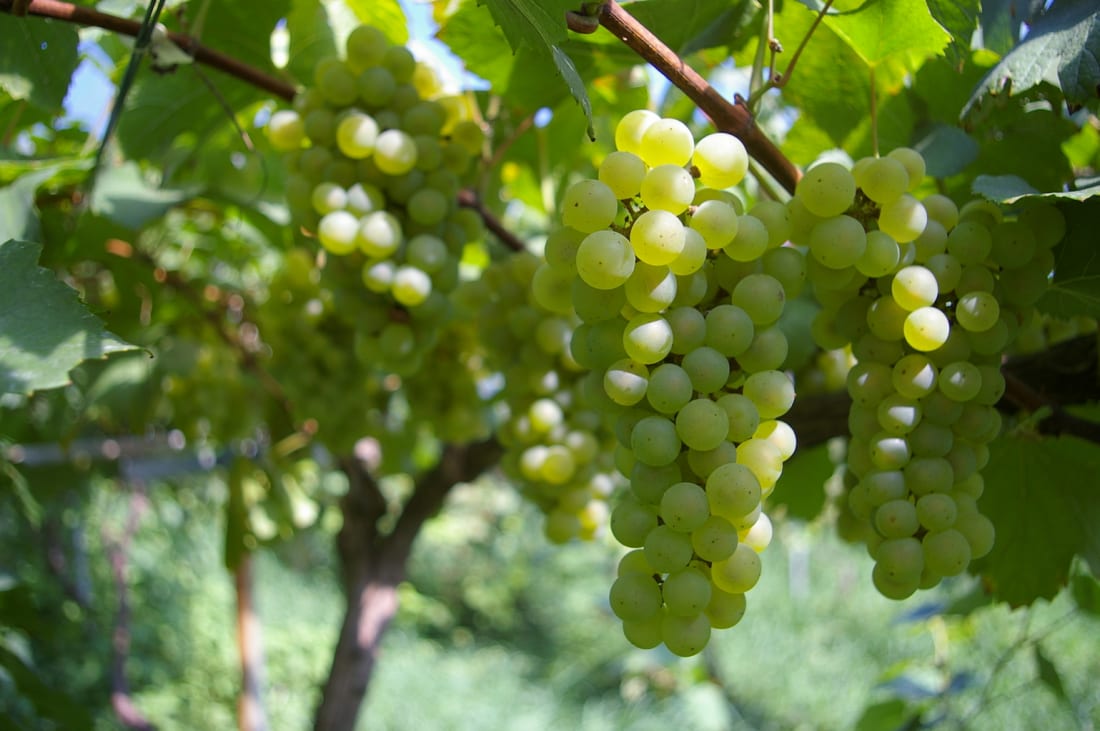
Tsuno Winery
Kyushu: A New Wave of Wines
In 2003, easing of agricultural landownership regulations in Japan allowed corporate entities to own farmland, and paved way for farmers and winemakers to expand their activities. Long famous for its vibrant produce, Kyushu is technically Japan’s first home for European wine, which was brought over by Portuguese missionaries in the 1500s.
These days local winemakers are looking to expand operations and grape varieties. Located higher up in the hills, away from Kyushu’s seasonal typhoons, several wineries recently introduced at Park Hyatt Tokyo’s Master of Food & Wine event are producing Koshu varietals to rival Yamanashi, and Chardonnays that are being recognized internationally.
With a warmer climate, Kyushu wineries are also finding success growing Spanish varietals such as Tempranillo. While Ajimu Winery in Oita Prefecture is considered one of the most beautiful wineries in all of Japan, Tsuno Winery located further south in Miyazaki Prefecture is producing wines that are putting Kyushu on the map. Led by up-and-coming master winemaker Seiji Akao, Tsuno Winery’s Sparkling Campbell Early Rosé was named the most exciting or unusual find in Asia by Wine Report, certainly not the last time a Japanese wine will garner international acclaim.

